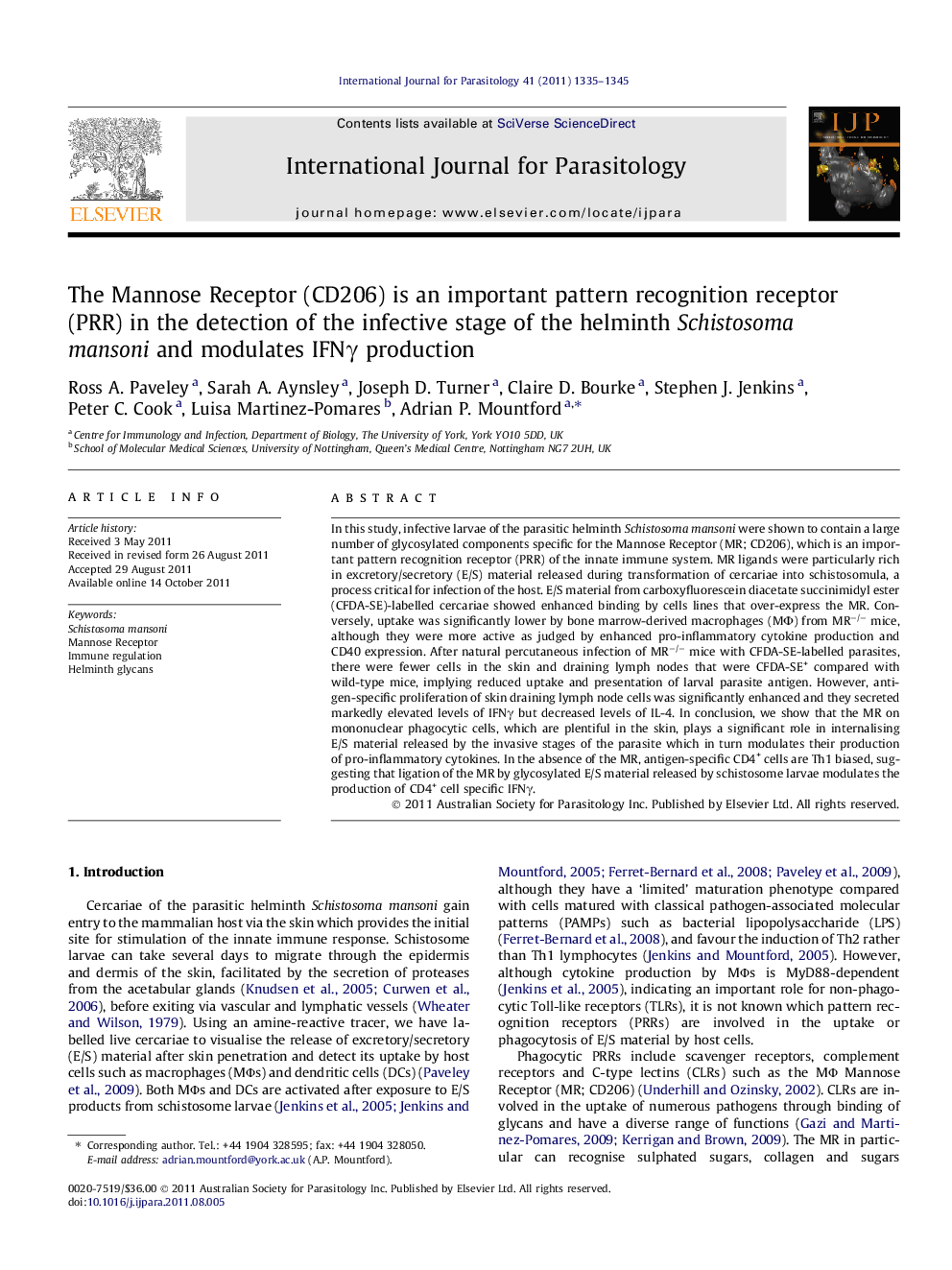| کد مقاله | کد نشریه | سال انتشار | مقاله انگلیسی | نسخه تمام متن |
|---|---|---|---|---|
| 2436291 | 1553731 | 2011 | 11 صفحه PDF | دانلود رایگان |

In this study, infective larvae of the parasitic helminth Schistosoma mansoni were shown to contain a large number of glycosylated components specific for the Mannose Receptor (MR; CD206), which is an important pattern recognition receptor (PRR) of the innate immune system. MR ligands were particularly rich in excretory/secretory (E/S) material released during transformation of cercariae into schistosomula, a process critical for infection of the host. E/S material from carboxyfluorescein diacetate succinimidyl ester (CFDA-SE)-labelled cercariae showed enhanced binding by cells lines that over-express the MR. Conversely, uptake was significantly lower by bone marrow-derived macrophages (MΦ) from MR−/− mice, although they were more active as judged by enhanced pro-inflammatory cytokine production and CD40 expression. After natural percutaneous infection of MR−/− mice with CFDA-SE-labelled parasites, there were fewer cells in the skin and draining lymph nodes that were CFDA-SE+ compared with wild-type mice, implying reduced uptake and presentation of larval parasite antigen. However, antigen-specific proliferation of skin draining lymph node cells was significantly enhanced and they secreted markedly elevated levels of IFNγ but decreased levels of IL-4. In conclusion, we show that the MR on mononuclear phagocytic cells, which are plentiful in the skin, plays a significant role in internalising E/S material released by the invasive stages of the parasite which in turn modulates their production of pro-inflammatory cytokines. In the absence of the MR, antigen-specific CD4+ cells are Th1 biased, suggesting that ligation of the MR by glycosylated E/S material released by schistosome larvae modulates the production of CD4+ cell specific IFNγ.
Figure optionsDownload high-quality image (44 K)Download as PowerPoint slideHighlights
► Excretory/secretory (E/S) material from schistosome cercariae contains an abundance of glycans.
► Larval E/S has high binding specificity for the Mannose Receptor (MR).
► MR+ cell lines internalised greater levels of fluorescent labelled larval E/S.
► Macrophages from MR deficient mice take up less larval E/S but are more active.
► In the absence of MR, CD4+ T cells secreted increased IFNγ but reduced IL-4.
Journal: International Journal for Parasitology - Volume 41, Issues 13–14, November–December 2011, Pages 1335–1345